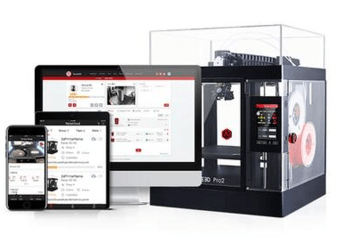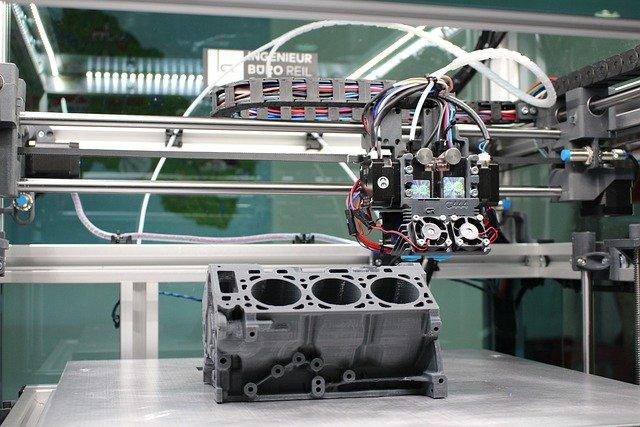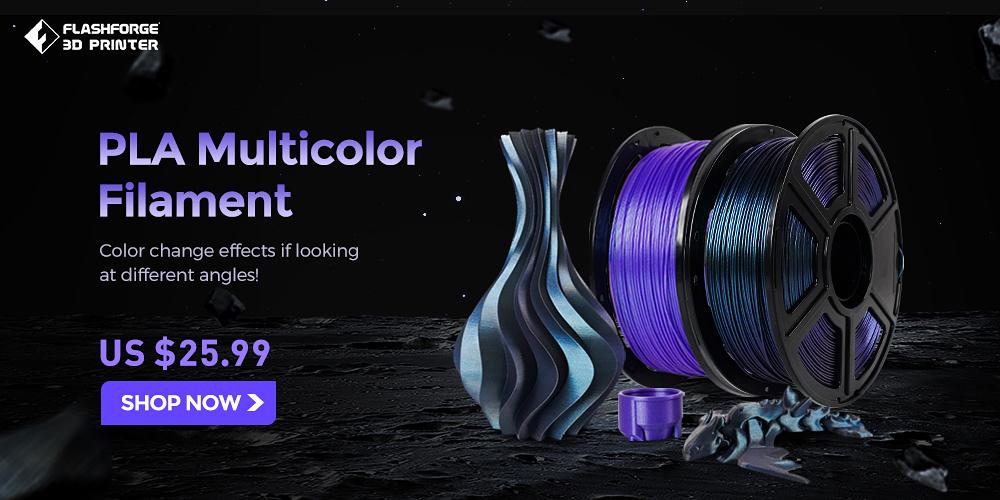3D printers are becoming increasingly popular in the architecture industry. They offer a number of benefits, including the ability to create prototypes quickly and easily, to test designs for fit and function, and to visualize projects in three dimensions.
 The 3D printers for architecture:
The 3D printers for architecture:
1. **Ultimaker S5**
The Ultimaker S5 is a high-end 3D printer that is perfect for architects who need a reliable and accurate printer. It is capable of printing with a wide variety of materials, including ABS, PLA, and nylon. The Ultimaker S5 is also easy to use and maintain, making it a great choice for both beginners and experienced users.
2. **Formlabs Form 3**
The Formlabs Form 3 is a stereolithography (SLA) 3D printer that is ideal for creating high-resolution models. It is capable of printing with a wide variety of materials, including resins that are transparent, flexible, and durable. The Formlabs Form 3 is also easy to use and maintain, making it a great choice for architects who need to create high-quality models quickly and easily.
3. **Prusa i3 MK3S+**
The Prusa i3 MK3S+ is an affordable and reliable 3D printer that is perfect for architects who are on a budget. It is capable of printing with a wide variety of materials, including ABS, PLA, and PETG. The Prusa i3 MK3S+ is also easy to use and maintain, making it a great choice for beginners and experienced users alike.
4. **Anycubic Photon Mono X**
The Anycubic Photon Mono X is a resin 3D printer that is perfect for creating high-resolution models. It is capable of printing with a wide variety of materials, including resins that are transparent, flexible, and durable. The Anycubic Photon Mono X is also easy to use and maintain, making it a great choice for architects who need to create high-quality models quickly and easily.
5. Creality Ender 3 V2
It is an affordable and reliable 3D printer that is perfect for architects who are on a budget. It is capable of printing with a wide variety of materials, including ABS, PLA, and PETG. The Creality Ender 3 V2 is also easy to use and maintain, making it a great choice for beginners and experienced users alike.
These are just a few of the many 3D printers that are available on the market. When choosing a 3D printer for your architecture practice, it is important to consider your specific needs and budget.
Here are some factors to consider when choosing a 3D printer for architecture:
- Printing resolution: The printing resolution is the level of detail that the printer can produce. For architectural models, a high printing resolution is essential for creating accurate and realistic models.
- Build volume: The build volume is the maximum size of the object that the printer can create. For architectural models, a large build volume is important for creating full-scale models or models of large structures.
- Materials: Different 3D printers are capable of printing with different materials. For architectural models, it is important to choose a printer that can print with materials that are durable and accurate.
- Price: 3D printers can range in price from a few hundred dollars to several thousand dollars. It is important to choose a printer that fits your budget and your needs.
Here are some of the benefits of using 3D printers in architecture:
- 3D printers can be used to create prototypes of buildings and other structures. This allows architects to test out different designs and get feedback from clients before construction begins.
- 3D printers can be used to create models of existing buildings and structures. This can be helpful for architects who are renovating or restoring buildings.
- 3D printers can be used to create custom-made architectural elements. This can save architects time and money on construction costs.
- 3D printers can be used to create educational models for students. This can help students learn about architecture and design.
3D printing is a rapidly developing technology that is having a major impact on the architecture industry. As 3D printers become more affordable and accessible, we can expect to see even more innovative uses for this technology in the years to come.

Are you an architect looking for a way to improve your workflow and create more innovative designs? If so, then you need to consider using a 3D printer.
3D printers are revolutionizing the architecture industry, and they can help you to do things that were never before possible. With a 3D printer, you can create prototypes of your designs, test out different materials, and get feedback from clients before construction begins. You can also use 3D printers to create custom-made architectural elements, educational models, and even full-scale buildings.
If you’re ready to take your architecture practice to the next level, then you need to invest in a 3D printer.
There are many different 3D printers on the market, so you can find one that fits your budget and your needs. And with the help of a 3D printer, you can create designs that are both innovative and functional.
Are you curious about the advantages of 3D printers for your architecture practice? Don’t wait any longer. Discover more now. Buy a printer, and get free gifts.
Thanks,
Bullwinkle





I am fascinated by 3D printers. In my field, they have started using 3D printers to allow a more perfect fit for hip and knee replacements. I can definitely see the benefit of using the same technology for architectural design. It is quite incredible for architecture it does not only allow you to develop prototypes but you can actually test materials to ensure what you are building is optimized. Great article!
I agree, 3D printing is a very versatile technology with a wide range of potential applications. It is exciting to see how it is being used in new and innovative ways, such as in architecture and medical engineering.
In architecture, 3D printing can be used to create models, prototypes, and even entire buildings. This technology can help architects to save time and money, and to create more sustainable and efficient designs. For example, 3D printing can be used to create custom-fit components for buildings, which can help to reduce waste and improve energy efficiency.
In medical engineering, 3D printing is being used to create custom-fit prosthetics, implants, and surgical guides. This technology can help to improve patient outcomes and reduce the cost of healthcare. For example, 3D printing can be used to create custom-fit hip and knee replacements, which can help to improve the patient’s range of motion and reduce pain.
I am confident that 3D printing will continue to revolutionize many different industries in the years to come. It is a truly amazing technology with the potential to make a positive impact on the world.
The introduction of the 3D printer a few years ago is beginning to give architects the ability to see how their designs can come to life. They also offer real-time solutions not only to the aesthetics of a structure but can also help find hidden flaws. Some of these flaws may be in the construction or the materials used.
Choosing the right printer for your company will be very important to you. Choose one that fits your budget but can handle a wide variety of materials for creating custom designs.
Jerry
You are right, 3D printers have revolutionized the architectural design process. They allow architects to create realistic models of their designs, which can be used to visualize the project and identify potential problems. 3D printers can also be used to create prototypes of building components, which can be tested in real-world conditions to ensure that they are durable and functional.
When choosing a 3D printer for your company, it is important to consider your budget, the materials you want to use, and the size of the models you need to create. There are a variety of 3D printers available on the market, so you should be able to find one that meets your needs.
Here are a few things to keep in mind when choosing a 3D printer for architecture:
Budget: 3D printers can range in price from a few hundred dollars to tens of thousands of dollars. It is important to set a budget before you start shopping so that you do not overspend.
Materials: 3D printers can use a variety of materials, including plastic, metal, and glass. Choose a printer that can use the materials you need for your projects.
Model size: 3D printers have different build volumes, which is the maximum size of the model that they can print. Choose a printer with a build volume that is large enough for the models you need to create.
Features: Some 3D printers have additional features, such as a heated build plate or a dual extruder, that can be helpful for certain projects. Consider the features that are important to you when choosing a printer.
Once you have considered these factors, you should be able to choose a 3D printer that is right for your company. 3D printers are a valuable tool for architects, and they can help you to create more efficient and effective designs.